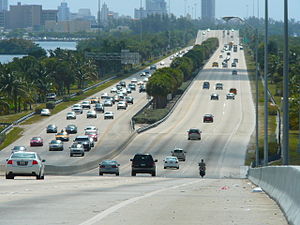
Where did all the sex offenders go after their eviction last year from under the Julia Tuttle Causeway? Reporter Robert Lyle’s WLRN radio series tracked down several former residents of this unlamented monument to the law of unintended consequences, and we want to add further information.
The causeway colony, the subject of lurid international headlines and a recent novel by Russell Banks, resulted from local laws that restrict sex offenders from living within 2,500 feet — one-half mile — from places that children gather, like schools, parks and school bus stops. In a dense urban county like ours, there is almost no affordable housing outside these boundaries. The inevitable consequence of these laws was to force sex offenders into homelessness.
The state had already passed a carefully-considered 1,000-foot law that would have allowed shelter for most of the county’s offenders. Furthermore, a geo-mapping survey proved there were far more registered sex offenders in the county than affordable housing units outside the 2,500-foot zone. Finally, social scientists have achieved rare unanimity about two issues: (1) housing instability increases the risk of recidivism among all offenders, and (2) residing near a school or park does not increase the already-low recidivism rate by the vast majority of sex offenders.
No comments:
Post a Comment